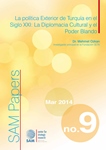

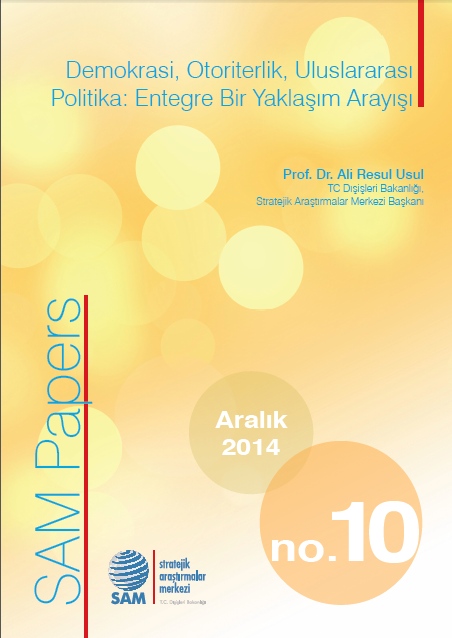
Keywords: Democracy; Democratization; Authoritarianism; International Relations
The nature of political regimes and their impact on international politics within the context of the Demo-cratic Peace Theory (DPT) is often discussed in the IR literature. e debate between the pro-DPT and anti-DPT circles continues. e DPT is now not only a theoretical approach in the field of IR, but has also become an effective foreign policy strategy. This paper argues that the discipline of IR needs more subtle and sophis-ticated conceptual tools to explain the complexities of the process of democratization and newly emerging hybrid regimes. It also argues that new approaches, concepts and explanations in the field of Democratiza-tion Studies could help the IR discipline to improve its theoretical strength in this regard. e recent debates over the characters of political regimes demonstrate that conceptual advancement in the discipline is a mat-ter of necessity. Thus, the paper recommends greater integration between IR and Democratization Studies.
More...
Any survey on publications in the field of political studies would inevitably show that analysis concentrates rather on leaders, elections and crises than on institutions and inter-institutional relations. This is because institutions are perceived as an already existing framework, as something given. Institutions and relations between them change so rarely and/or so slowly that in many cases these changes could be ignored in a short-term analysis. As it came out from my search for secondary literature especially rare are studies on the head-of-state institution. This article tries to demonstrate that such a study can be a helpful tool for the analysis of the establishment of democratic regimes in former communist countries. It can be revealing in terms of understanding authoritarian, paternalist and populist traditions in post-communist societies and their manifestation on the highest level of the political system in the recent decades. The study focuses on the evolution of the head-of-state institution in the Southeast European post-communist states (Albania, Bulgaria, Romania, the successor states of former Yugoslavia), considering other post-communist countries as controlling cases.
More...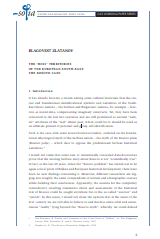
Keywords: national traditions of social and political thinking in Southeastern Europe; European nation states; Ottomanism; Ottoman Empire;
The history of the different national traditions of social and political thinking in Southeastern Europe is usually examined in their relationship with the developments in the leading European nation states. This is certainly a legitimate approach, but it should be added that beside the multiple interactions between the "marginalized," "small nations" in the "periphery" and the "European core" there was one more major actor – the multinational empires in the Eastern part of the continent. They had their identity politics, which failed in the long run, but had a considerable influence during the 19th century. In what concerns the Ottoman Empire, almost all studies mention these politics, usually referred to as "Ottomanism," but very few of them examine it. This article focuses on "Ottomanism" as a problem in its own right, but also raises the question of the impact of these politics on the national discourses in the region.
More...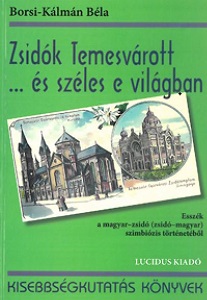

Keywords: post-soviet countries; Nagorno-Karabakh; Transnistria
Conflicts in post-Soviet areas involving de facto states have remained unresolved since the ceasefires in the early 1990s. By heating up periodically, these conflicts threaten broader regional security, and by remaining unresolved, limit their chances for political association and economic integration with the EU, undermining the Union’s Eastern Partnership. In recent years, the EU’s tensions with Russia, the ever-growing dependence of most post-Soviet de facto states on Russia, the recent re-escalation in Nagorno-Karabakh, and recently emerged, protracted conflict in eastern Ukraine have made the situation more complicated and urgent. Since the EU’s current approach towards these “frozen conflicts” has so far shown little result, the EU and the V4 should take a more active role in resolving these conflicts and might want to consider stepping up engagement with the post-Soviet de facto states. Increasing the interaction and extending its scope while at the same time reassuring the parent states that this will not constitute “de facto recognition” would de-isolate the populations of these territories, reduce their dependence on Russia and provide incentives for conflict resolution.
More...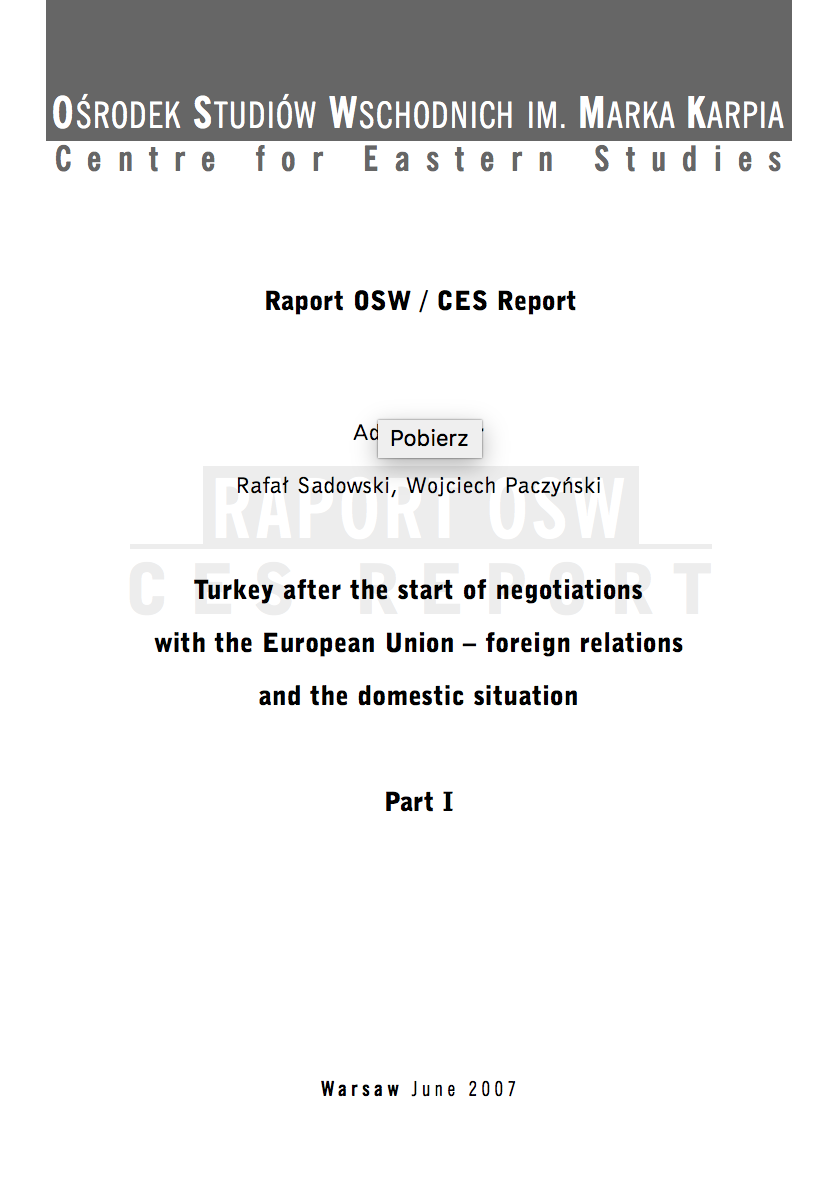
Keywords: Turkey; European Union
The start of accession negotiations between Ankara and the EU is vital for the future of both Turkey and the Union, including Poland as its member state, as well as for the geopolitical situation in Eurasia (the Black Sea region, Caucasus, Central Asia and the Middle East). Appreciating the significance of these issues, the Centre for Eastern Studies in early 2005 decided to launch a project entitled "Turkey after the start of negotiations with the European Union - foreign relations and the domestic situation". The goal of this project is to present, within the context of accession negotiations, Turkey's greatest internal challenges as well as Ankara's relations with its neighbour regions, the EU and the USA. This Report is the first of three which will be published as part of the project. The Report includes texts on Turkish-US relations since 2003, major political and social challenges on Turkey's path towards the EU and the current condition of the Turkish economy. The Report was developed between July 2005 and November 2006, over which time CES workers and associates searched for publicly available materials in Poland, Turkey and EU countries, and went on three research trips to Turkey, where they met local researchers, analysts, politicians and officials. The authors of the Report would like to express their gratitude to everyone who have shared their opinions with them, and to the Polish Embassy in Ankara, especially to Ambassador Grzegorz Michalski and Minister Andrzej Ananicz for their expert support and assistance in the authors' work on this Report. This Report does not present the official stance of the Polish government on the issues discussed therein; instead it reflects the personal views of its authors, who have made their best efforts to ensure that their work is reliable.
More...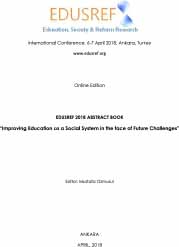
Keywords: Education; social systems; conference;
Estabilishing in 2018 as a scientific initiative; Education, Society & Reform Research (EDUSREF -2018) is an International Conference that aims to bridge the knowledge gap, promote research esteem, and produce democratic information for potential education reforms.
More...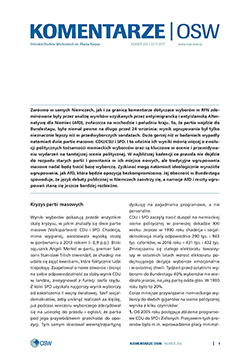
Keywords: Turkey; military
W ostatnich dwóch latach Tureckie Siły Zbrojne (Türk Silahlı Kuvvetlerı – TSK) zostały poddane przekształceniom niemającym precedensu w historii republikańskiej Turcji. Proces podporządkowywania wojska rządom cywilnym przez rządzącą Partię Sprawiedliwości i Rozwoju (AKP) gwałtownie pogłębił się po nieudanym puczu z 15 lipca 2016 roku. Rząd doprowadził do zniesienia autonomii sił zbrojnych, które zachowując swoje ogromne znaczenie w ramach aparatu państwowego, przestały pełnić rolę zwornika skupiającego stare kemalistowskie elity. Bezprecedensowe w swojej skali czystki oraz ustanowienie formalnej kontroli cywilnej stanowią jednak preludium do znacznie głębszej zmiany – celem jest stworzenie nowego wojska, służebnego wobec władz i złożonego z nowych ludzi, niewywodzących się z tradycyjnego dla armii zaplecza. Odzwierciedla to wymianę elit, jaka dokonała się podczas rządów AKP.
More...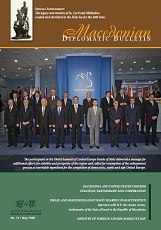
Keywords: North Macedonia; NATO membership; EU membership; Ss. Cyril and Methodius Holiday;
More...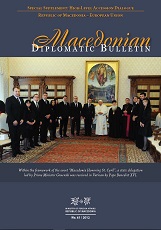
Keywords: North Macedonia; international relations; diplomacy; EU integration; High-Level Accession Dialogue; NATO;
More...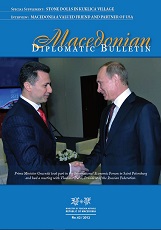
Keywords: North Macedonia; international relations; diplomacy; diplomatic events;
More...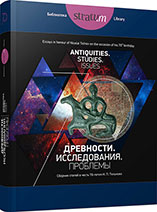
Keywords: Carpathian-Danube region; Scythian culture; akinakes; axe; spear; panoply; cultural grouping
The division between the dimensional groups of blade weapons is conditional and, probably, the boundary between them can vary from one epoch to another. The analysis of variation series of such features as “total length” and “blade length” showed the heterogeneity of the sample (more than 800 ex.) and the existence of several functional standards. Five groups were distinguished: daggers (with a blade length of up to 21 cm), short swords (21—37 cm), medium swords (38—53 cm), long swords (54—75 cm) and extra-long swords (with a blade length in excess of 75 cm). Mapping of spearheads and axes also made it possible to reveal some regularities. It became obvious that it is possible to build a typological grouping of regions on the basis of the contents of weaponry and move from small cultural groups to cultural blocks, enclaves, communities of people who preferred similar types of weapons. The counting of the degree of similarity by the method of classification by unequal features demonstrated several such enclaves: “Carpathian” one, where the greatest degree of similarity was manifested between Western Podolian, Transylvanian and Moldavian groups. The main types for this enclave are a dagger or a short sword and an axe. The next, “Steppe” block includes the Lower Danube, Lower Dniester, South Carpathian and South Danubian groups, in which the spearheads and medium or long swords are widely distributed. The third, “Western” block united the Hungarian and Polish groups, for which the axes and spearheads are more characteristic.
More...
Keywords: left bank of the Lower Dniester Region; 3rd century BC; Scythians; barrow; burial; catacomb; torque; bracelet; mirror; fibulae
In 2017, barrow 116 of the Scythian cemetery of the 3rd—2nd centuries BC near Glinoe village, Slobodzeya district, on the left bank of the Lower Dniester Region was investigated. Two burials in the catacombs were studied under the mound, surrounded by a ring ditch with two ruptures. A paired children's burial was made in the northern burial chamber of the main grave 116/1, accompanied by an unusual inventory — a three-tiered torque, a pair of gold earrings, a silver multi-turned bracelet, two belt buckles with images of men's faces, a bronze mirror with an iron handle in a sheath, two conical and two flat trapezoidal pendants, as well as a bunch of composite adornments from beads. Wooden coffin was built to bury a man — a noble warrior in the eastern burial chamber of this catacomb. Three fibulae were found on the skeleton in addition to a representative set of weapons, adornments and a hand-made bowl. Also a warrior was buried in the secondary grave 116/2, a pair of long fighting knives lay near the body. Barrow 116 dates back to the third quarter of the 3rd century BC on the basis of the fibulae of the Early La-Tene construction and fragments of Heraclean amphora from the ditch.
More...
Keywords: The Upper Don region; Early Middle Ages; iron metallurgy; slag; chemical composition
The author publishes the results of studies on Stayevo-4 settlement (Michurinsk district, Tambov region). Ferrous metallurgy and black smithery were main occupations of the local population. The site yielded numerous iron artifacts and blacksmith tools. None of the unearthed structures used to serve as a dwelling. Most likely, the territory used to be metallurgists' and blacksmiths' production area. A series of decorations and elements of belt sets found here date this site by the second half of the 5th—7th centuries. The settlement is the latest of the sites of Chertovitskoe-Zamiatino type in the Upper Don region.The study revealed differences in chemical composition of slag samples from Istia-2 and Stayevo-4. The findings can be used to infer wether the slags and slag inclusions originated from Istia-2 or Stayevo-4.
More...
Keywords: democratic deficit; autocratic power; illiberal state; culture; education; science; media; Autonomy; civil society, intellectuals; European values
This report has been prepared by independent Hungarian intellectuals who wish to inform the Hungarian and international public as well as European institutions about the severe harm that the Orbán regime governing Hungary since 2010 has caused in the fields of education, science, culture, and the media. The reason for preparing the present report is that the acts of the successive Orbán governments consistently run counter to and consciously violate the fundamental principles, values, and norms of the European Union, not only as regards the rule of law and political and social rights, but also in the case of the cultural areas discussed here. In Hungary, important European values are being jeopardised, including cultural diversity, scientific and artistic autonomy, the respect for human dignity, access to education and culture, conditions for social mobility, the integration of disadvantaged social groups, the protection of cultural heritage, and the right to balanced information, as well as democratic norms like ensuring social dialogue, transparency and subsidiarity. By presenting the activities of the Orbán regime in the fields of culture, education, research, and the media, we provide information about areas little known to the international public. With our report, we wish to draw attention to the fact that an autocratic system has been constructed and consolidated in Hungary with the money of EU taxpayers and with the financial and political support of EU institutions. This system creates a worrying democratic deficit and severe social problems, while it also causes irreparable harm in the fields of education, science, and culture. The authors of the report are leading researchers, lecturers, and acknowledged experts, including several academicians, professors, heads of departments, and a former Minister of Culture. The undertaking was initiated and coordinated by the Hungarian Network of Academics
More...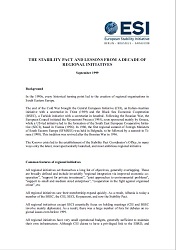
Keywords: women in Turkey; feminism in Turkey; secular Turkey; islamic Turkey; Kemalist Turkey;
There are some who fear that Turkey may be turning its back on its secular traditions. Some of the loudest voices come from Kemalist women, who insist that the rise of ‘political Islam’ represents an acute threat to the rights and freedoms of Turkish women. There have even been calls for restrictions to Turkish democracy, to protect women’s rights. Yet such an ‘authoritarian feminism’ is out of touch with the reality of contemporary Turkey and the achievements of recent years. || Turkey has a long road ahead of it in narrowing its gender gap. In a recent international study, Turkey ranked an embarrassing 105th of 115 countries – far behind the worst-ranking EU member. Improving gender equality will involve tackling a series of deeply entrenched problems, from improving access to education in rural regions to removing the institutional and social barriers to women’s participation in the workforce. Elections in July this year will test the commitment of Turkey’s political parties to increasing the number of women in parliament. || It is these issues which deserve to be at the centre of the current political debate in Turkey. And it is only the maturing and further development of Turkish democracy that holds out the promise of a genuine liberation of Turkish women.
More...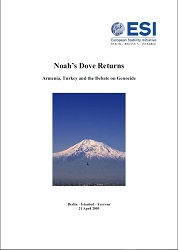
Keywords: Armenia-Turkey relation; genocide of Armenians;
No single topic poisons relations between Turks and Armenians more than the 1915 destruction of the Armenian communities of Anatolia, and the question of whether it constituted genocide. For Turkey, the fight against genocide recognition on the international stage has been a central goal of foreign policy. For Armenians, the genocide and the resulting loss of a traditional homeland is a defining element of their national identity. At present, the two countries have no diplomatic relations. The border between them remains closed. In recent times the first signs of a rapprochement have appeared, with the political leadership on both sides making conciliatory gestures. For a normalisation of relations to take place, however, both sides will have to overcome some deeply entrenched prejudices. || Today is a critical period for both countries. Restoring diplomatic relations and opening the border, though only first steps towards reconciliation, would marginalise extremist voices on both sides, enabling a more reasonable and measured debate to go forward. Turkey should stop trying to stifle discussion of the Armenian genocide both at home and abroad – and avoid over-reacting if, as might well happen, any more of its allies recognise the events of 1915 as genocide. For their part, Armenians must accept that recognition of the genocide will never pave the way for challenging a territorial settlement that has stood for nearly a century.
More...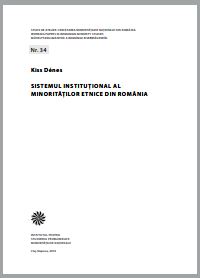
Keywords: Minority Institutional system; Romanian minorities; Minority institutional sphere;
Having the objective to draw a minority institutional model, the present study analyzes the ethnic minority organizations from Romania in a comparative perspective. At the same the study intends to increase knowledge about, and to facilitate access to these minority institutions. The study contains three chapters: the first lays down the theoretical basis for drawing the institutional model; the second chapter presents the features of the minority institutional sphere; while the last chapter details the institutional system of each minority included in the analysis.
More...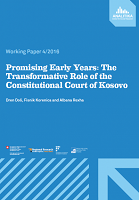
Keywords: Kosovo; Constitutional Court; politics; transformative role; jurisdiction;
In constitutional democracies, constitutional courts are established in order to support the establishment and maintenance of democratic regimes, being devised as a last resort mechanism to protect both human rights and the integrity of constitutions. The leitmotiv behind the establishment of the constitutional courts in Austria and what was then known as Czechoslovakia, in the period between the World Wars, has traditionally been explained in this manner. According to Tushnet, many countries have established ‘[…] specialized constitutional courts on the German model, rejecting the older U.S. system of having the nation’s highest court for ordinary law also serve as the highest court for constitutional law’. Tushent argues that until the late twentieth century there were two ideas about the means of policy control that are arguably inconsistent with the constitution’s limits. The first ‘…was parliamentary supremacy which allowed for democratic self-governance surrounded by some institutional constraints on power-holders and many more normative ones. The second was judicial review, that is, the creation of a separate institution, removed from the direct influence of politics and staffed by independent judges charged with the job of ensuring that the legislature remained within constitutional bounds’. Constitutional courts, through the jurisdiction entrusted to them, have had direct impact upon the consolidation of newly-established democracies around the world. Vanberg notes that the constitutional review has become an inherent part of the constitutional democracies in many western states. While operating at the heart of politics, constitutional courts continuously face challenges that directly impact their work, including their independence. Boulanger, for example, argues that ‘…judges have to consider the political effects of their actions, they have to strategically choose opponents and allies, and this will in turn have an influence on their decisions. Starting from a rational choice approach, we can predict that no court will decide cases with complete disregard for daily politics.’ In that context, it could be reckoned that the final outcomes may be determined by both ideological and political motives. In light of this, Waluchow did not reject the possibility that the judicial review sporadically assists in confirming political decisions ‘…by judges pursuing, consciously or not, their preferred political agendas’. In this paper, however, we analyse whether and, if yes, how, the Constitutional Court of Kosovo has influenced and guarded the essentials of the nascent democracy. While we strive to assess the Constitutional Court’s role in the democratic transition of Kosovo, various external factors, such as political influence and the legitimacy of the Court, will necessarily be part of the equation. The first section of this paper briefly reviews the role of constitutional courts in transitional democracies, and identifies the common denominators which explain their endeavours to influence democratic developments. The second section focuses on the jurisdiction, functioning and organisation of the Court, and its relationship with public opinion. The third section analyses internationalised constitutionalism and its impact on the legitimacy and integrity of the Court in Kosovo. The fourth and fifth sections assess specific indicators, including the perceived level of confidence in the Court by political actors and the public at large, the role of international actors, and the perceived outside pressure on judges, doing so through analyses of the most notable cases and their impact upon societal and political life in the country. The final section provides a brief conclusion.
More...